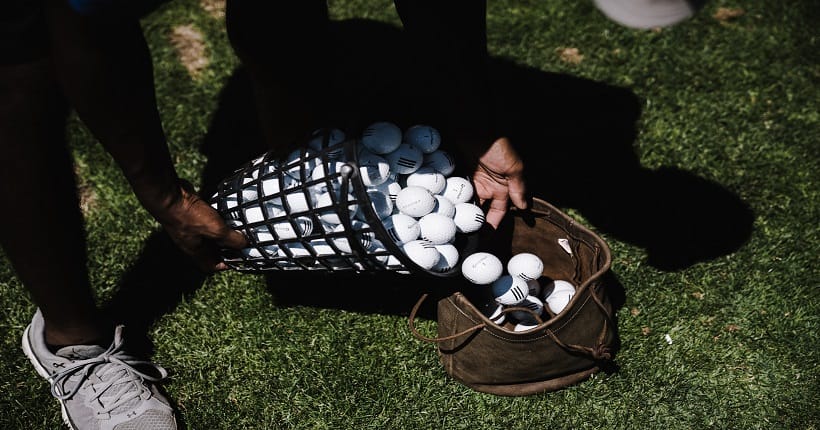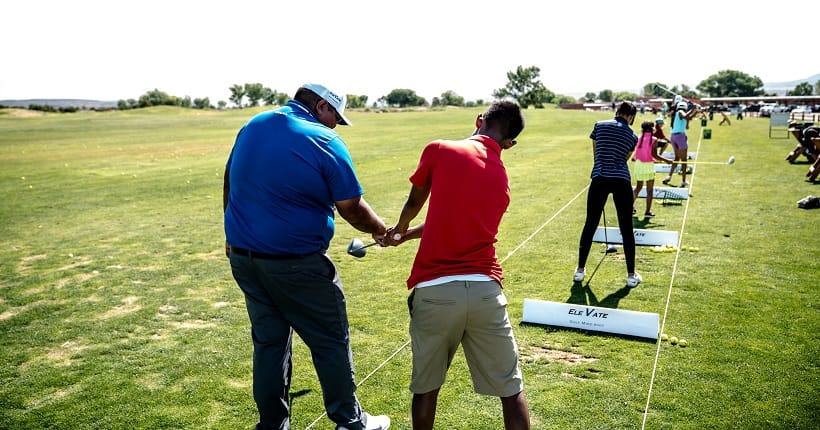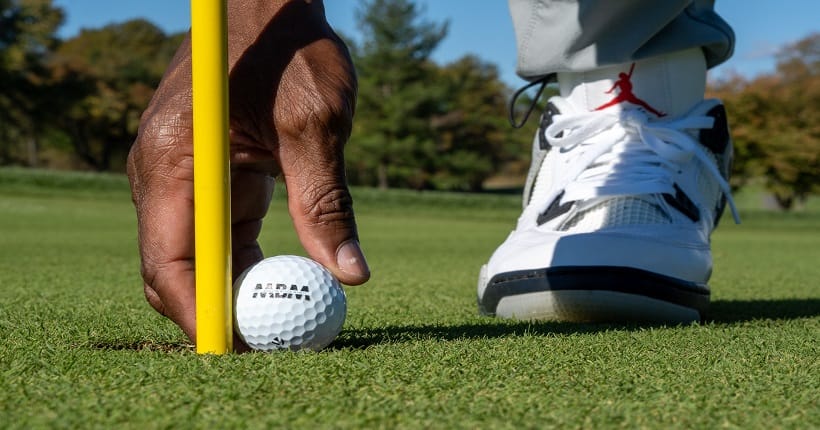How Are Golf Balls Made?
Golf balls are made through a process that involves combining various materials and molding them into a spherical shape. This intricate process ensures optimum performance and durability for golfers on the course.
In the world of golf, the construction of a golf ball is a fascinating blend of science, design, and craftsmanship. To the casual observer, a golf ball may seem like a simple, uniform sphere. However, the reality is that it is a carefully engineered piece of equipment, meticulously crafted to enhance performance and meet the demands of different players.
From the combination of materials to the complex manufacturing techniques, each aspect plays a critical role in producing a golf ball that delivers on distance, control, and feel. We will dive into the fascinating process of how golf balls are made, providing a glimpse into the inner workings of this essential piece of golf equipment. So, let’s tee off and explore the journey from raw materials to the finished product on the fairway.
From Leather Pouches To Modern Designs
Golf balls have come a long way from their humble beginnings in leather pouches to the advanced designs we see on the golf course today. Throughout history, various materials and technologies have been developed to enhance the performance and durability of these small but essential components of the game. Let’s dive into the fascinating journey of how golf balls have evolved over time.
Early golf ball materials
In the early days of golf, before the invention of the rubber core, golf balls were handcrafted using a range of materials. Feathers, for example, were a popular choice for their remarkable durability and predictable flight path. These feather-filled golf balls consisted of a leather pouch, usually stitched by hand, and were painstakingly constructed by skilled craftsmen.
Another material commonly used was wood. These wooden golf balls were typically made from beech or boxwood and carved into a spherical shape. Despite their solid construction, wooden golf balls had their limitations. They were prone to cracking and did not provide the same level of control and distance as their feather-filled counterparts.
Challenges with early designs
While feather-filled and wooden golf balls were groundbreaking for their time, they presented a host of challenges. The construction of feather-filled balls was a meticulous process, requiring several hours of skilled labor to complete a single ball. Additionally, these balls were susceptible to damage from moisture and were often rendered useless after being exposed to wet weather conditions.
Wooden golf balls, on the other hand, suffered from issues related to their material and design. Their solid construction often caused them to fly inconsistently and unpredictably due to irregularities in the wood. Furthermore, wooden balls were expensive to produce and not readily accessible to all golfers, limiting the growth of the game.
Introduction of the rubber core
The breakthrough in golf ball design came with the invention of the rubber core. In the late 19th century, a Scottish chemist named Robert Adams discovered the elasticity and resilience of gutta-percha, which is a natural latex material. This led to the development of the first rubber-cored golf ball.
The introduction of the rubber core revolutionized the game of golf. This new design allowed for consistent distance and improved control, making golf more enjoyable for players of all skill levels. The rubber core also addressed the durability issues faced by earlier ball materials, making it more resistant to damage caused by moisture and impact.
Development of dimples for better aerodynamics
As golfers embraced the benefits of rubber-cored golf balls, further advancements were made to improve their flight performance. One of the most significant innovations was the development of dimples on the surface of the ball. Dimples were first incorporated by English engineer William Taylor in the early 20th century, and they quickly became an integral part of golf ball design.
The addition of dimples transformed the aerodynamics of golf balls. By creating turbulence in the airflow around the ball, dimples reduced drag, allowing the ball to maintain a more stable and consistent trajectory. This breakthrough in design resulted in increased distance, better accuracy, and improved overall performance on the course.
Today, golf balls continue to evolve with innovative technologies and materials, constantly pushing the boundaries of performance. From the leather pouches of golf’s early days to modern designs featuring multi-layer constructions and advanced cover materials, golfers now have a wide array of options to suit their specific playing style and preferences.
A Closer Look At Golf Ball Production
When it comes to understanding how golf balls are made, it is fascinating to delve into the intricate process involved in their production. One important aspect is the manufacturing of golf balls, which encompasses several steps. In this article, we will take a closer look at the production of golf balls, covering everything from the initial design and material selection to the creation of the outer layer and the different cover options available: Surlyn and urethane covers.
Initial Design and Material Selection
The first step in golf ball production is the initial design and material selection. Golf ball manufacturers employ a team of engineers and designers who work together to create the perfect ball for players of all skill levels. Extensive research is conducted to determine the optimum performance characteristics, such as spin control, distance, and trajectory.
Once the design has been finalized, materials for the core and cover are carefully selected. The core plays a crucial role in determining the ball’s overall performance. Manufacturers have the option to choose between a solid rubber core or a multi-layered construction, which can enhance specific playing characteristics.
Injection Molding the Core
After the design and material selection, the next step involves injection molding the core. This process requires precision machinery and skilled operators. The chosen materials, whether it be rubber or a combination of different materials, are heated and then injected into molds to create the golf ball cores.
The injection molding process ensures consistency and accuracy in the dimensions and weight of the cores. It also allows for customization, as manufacturers can adjust the core’s compression to achieve desired performance characteristics. Once the cores are molded, they undergo quality control checks to ensure they meet the required standards.
Creation of the Outer Layer
Following the core production, the outer layer of the golf ball is created. This layer, often referred to as the cover, significantly influences the feel and spin of the ball. Manufacturers offer different cover options to cater to golfers’ preferences and playing styles. The most commonly used materials for golf ball covers are Surlyn and urethane.
Surlyn covers, which are typically found on lower-priced golf balls, offer durability and excellent distance. They provide a firm feel and are resistant to scuffs, making them suitable for players who prioritize distance and durability over spin control. On the other hand, urethane covers are known for their soft feel and high spin rates. They offer better control and are favored by more advanced players who seek enhanced shot shaping capabilities.
In conclusion, a closer look at golf ball production reveals the meticulous attention to detail and careful craftsmanship involved in creating these essential pieces of equipment. From the initial design and material selection to the injection molding of the core and the creation of the outer layer, each step is crucial in manufacturing high-quality golf balls. The availability of different cover options, such as Surlyn and urethane, ensures that players can find a ball that suits their unique playing style and preferences.
(Note: The content above is presented in HTML format suitable for WordPress)
Ensuring Consistency And Performance
When it comes to the game of golf, the performance of a golf ball can make all the difference. Manufacturers go to great lengths to ensure that each ball delivers consistent performance for players of all skill levels. Through rigorous testing and inspection processes, they strive to maintain the highest quality standards, from the core to the cover. Let’s take a closer look at how golf ball manufacturers ensure consistency and performance.
Testing the specifications of the core
The core of a golf ball is a crucial component that directly affects its performance. To ensure consistency, manufacturers conduct comprehensive tests to verify the specifications of the core meet their strict standards. These tests involve measuring the core’s diameter, weight, and compression. By carefully controlling these specifications, manufacturers can fine-tune the performance characteristics of the ball, such as ball speed, distance, and feel.
Measuring compression and spin rates
Compression and spin rates are key factors that determine the ball’s performance and playability on the golf course. To maintain consistency, golf ball manufacturers utilize advanced machinery to measure and analyze these crucial parameters. By measuring compression, manufacturers ensure that each ball provides the desired level of softness or firmness. Spin rates, on the other hand, influence the ball’s trajectory, control, and stopping power. Testing and monitoring these rates allow manufacturers to optimize the ball’s performance for different swing speeds and conditions.
Inspecting the seamless cover
The cover of a golf ball plays a vital role in providing durability, feel, and control. Manufacturers meticulously inspect the seamless cover to detect any defects or imperfections. This involves visual inspections as well as specialized tests to assess the cover’s thickness, elasticity, and durability. By ensuring a flawless cover, manufacturers can guarantee that each ball offers consistent performance, shot after shot.
Random sample testing to maintain quality standards
To maintain quality standards, golf ball manufacturers conduct random sample testing throughout the manufacturing process. This involves selecting balls at various stages and subjecting them to rigorous tests. These tests include impact and durability tests, water resistance tests, and performance assessments. By sampling and testing different balls, manufacturers can identify and address any potential issues, ensuring that every ball that leaves the factory meets the highest quality standards.
In conclusion, golf ball manufacturers go above and beyond to ensure the consistency and performance of their products. Through thorough testing, measuring, inspecting, and random sampling, they guarantee that each ball meets the desired specifications and provides players with the performance they expect on the golf course.
Frequently Asked Questions Of How Are Golf Balls Made?
How Do They Make Golf Ball?
Golf balls are made using a combination of materials, including a rubber core, plastic cover, and dimples for aerodynamics.
Are There Rubber Bands Inside Of Golf Balls?
No, there are no rubber bands inside golf balls. Golf balls are made of materials like rubber and plastic.
Are Golf Balls Littering?
Yes, golf balls can be considered litter when left behind on the golf course.
Why Are There Dimples On A Golf Ball?
Dimples on a golf ball enhance lift and reduce drag, allowing it to travel farther and straighter through the air.
How Are Golf Balls Made?
Golf balls are made through a process that involves molding, compression, layering, and coating different materials to achieve the desired performance characteristics. The inner core is typically made of rubber, while the outer cover is made of a durable material like Surlyn or urethane.
The manufacturing process involves heating the materials, molding them into the desired shape, and then applying a dimple pattern to optimize aerodynamics. Finally, the balls are painted, inspected, and packaged for sale.
Conclusion
To summarize, the process of golf ball manufacturing involves a combination of technology, innovation, and precise craftsmanship. From the initial design phase to the final inspection, each step is crucial in ensuring the production of high-quality golf balls. The core, mantle, and cover all undergo meticulous manufacturing processes to optimize the ball’s performance and durability.
Different types of materials and techniques are utilized to create diverse golf ball models that cater to various player preferences and skills. Environmental sustainability is also a key focus, with manufacturers striving to reduce the impact of production on the environment.
By understanding the intricate manufacturing process, golfers gain a greater appreciation for the skill and expertise that goes into creating the golf balls they use on the course. Whether you are a professional player or a recreational golfer, knowing how golf balls are made adds another layer of enjoyment and understanding to the sport.
So next time you tee off, remember the careful craftsmanship that goes into that tiny white ball.







